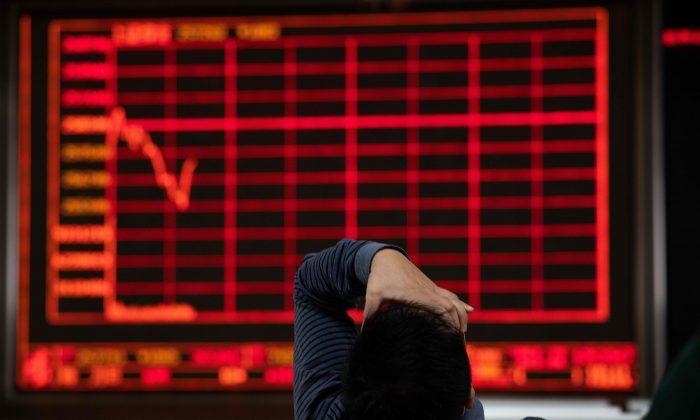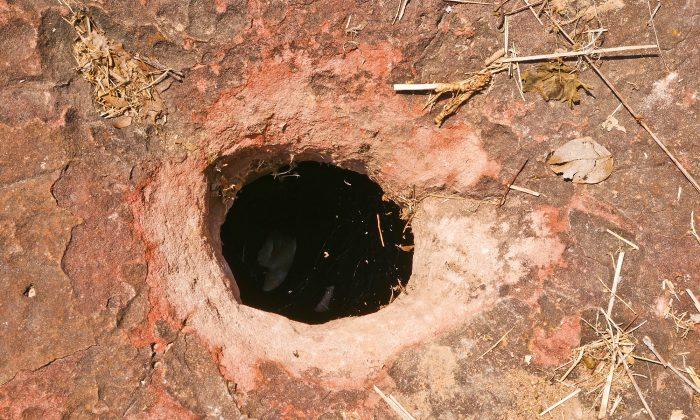News analysis
To strengthen “the public sector of the economy as the mainstay,” the Chinese Communist Party (CCP) has enforced many reforms involving state-owned enterprises, de-leveraging, and taxation. It has recruited private enterprises and small and medium-sized enterprises. However, according to the latest data on state-owned assets the CCP recently released, prospects for the public sector appear dim.
The National People’s Congress (NPC), China’s rubber-stamp legislature, recently conducted a review of two reports submitted by the State Council: the “State-owned Assets Report” and the “State-owned Financial Assets Report.”
A Chinese finance blogger analyzed the latest data on state-owned assets and found that given the enormous debt owed by the Chinese regime, the “public economy” is in no position to act as the backbone of the national economy.
Regime Debt
According to statistics published by China’s Ministry of Finance, as of the end of December 2017, local governments’ owed 1,647.6 billion yuan ($236.19 billion) in debt, while the central government’s national debt balance was 1,437.016 billion yuan. Total government debt stood at 29.95 trillion yuan, or $4.29 trillion.However, the authorities’ are not limited to only central government bonds and local debts. The analysis does not include invisible debts owed by local governments, which exceed the official numbers by several times. In terms of liabilities on the table, the Chinese regime also has policy-induced banking debts and government-backed institutional debts.
According to data published by the Central Clearing Company of China’s Ministry of Finance, as of the end of 2017, China’s policy bank bonds were worth 13.39 trillion yuan ($1.92 trillion) and government-backed institutional debts amounted to 1.48 trillion yuan ($212.1 billion), making a total of 14.9 trillion yuan ($2.14 trillion).
All forms of state-associated liabilities put together amounted to a total government debt of $6.44 trillion.
Regime Assets
According to the state-owned assets report released on Oct. 24, as of the end of 2017, central and local governments and other administrative institutions had a net asset value of 20.4 trillion yuan (about $3 trillion).State-owned assets mainly refer to non-profit assets such as government office facilities, schools, hospitals, and affordable housing. The 20.4 trillion yuan of administrative net assets are vastly dwarfed by the 44.9 trillion yuan in debts. The remaining debt of 24.5 trillion yuan ($3.51 trillion) can only be covered using the CCP’s “public economy.”
The CCP is unlikely to sell off Party officials’ government buildings to pay off debts. Moreover, even if the Party sells off all its administrative assets, the funds gained from selling the “public economy” can hardly balance out the government’s bottomless liabilities.
A Look at the CCP’s ‘Public Economy’
According to the State Council report on state-owned assets, at the end of 2017, net assets of state-owned shares in state-owned financial and non-financial enterprises were 16.2 trillion yuan ($2.32 trillion) and 50.3 trillion yuan ($7.21 trillion) respectively, totaling 66.5 trillion yuan, or $9.53 trillion.Since the CCP’s “public economy” was worth 66.5 trillion yuan at the end of last year, appearances would suggest that all debts can technically be repaid. But paying off debts this way would result in a massive political dilemma for the Party: large-scale privatization would effectively remove the state sector — and with it the Party’s leadership — from its dominant role in the Chinese economy.
In the state-owned enterprise shareholding structure, in addition to the state-owned shares in holding positions, there are shares owned by private capital and foreign entities. If the state owns less than half of the shares in a company, it becomes a private enterprise. Should this happen on a large scale it would be the end of the CCP’s “public economy.”
As of the end of 2017, among state-owned non-financial enterprises, the ratio of net assets of state-owned shares (50.3 trillion yuan) to total net assets (65 trillion yuan) was 0.774 to 1, means that state-owned shares accounted for 77.4 percent of shares in the average company. Among state-owned financial enterprises, state-owned shares accounted for an average of 68.4 percent, or 16.2 trillion yuan of the 23.7 trillion yuan total.
Should the CCP try to use the net assets of state-owned enterprises to repay its debt, while reducing the proportion of state-owned shares to 50 percent, the authorities can get 17.8 trillion yuan ($2.55 trillion) and 4.7 trillion yuan ($0.67 trillion) out of state-owned non-financial enterprises and financial enterprises respectively for a total of 22.5 trillion yuan ($3.23 trillion). In this case, the Party would still come up short of paying the debt by 2 trillion yuan.
Therefore, if the CCP really wants to pay off its debts, it will have to reduce the proportion of state-owned shares in state-owned non-financial enterprises or financial enterprises to less than 50 percent. The CCP would in this situation broadly lose controlling stakes in the state-owned enterprises.
The Party’s debt crisis has intensified this year due to the US-China trade war and China’s economic system defects. By the end of September 2018, total treasury bonds, local bonds and policy financial bonds had increased by 3.58 trillion yuan ($0.51 trillion).
If the CCP maintains a controlling stake in state-owned financial enterprises, that is, 50 percent of the shares, to pay off its debts, the CCP will not only have to sell all administrative assets such as government buildings and 18.4 percent of state-owned shares, but also 23.4 trillion yuan ($3.35 trillion) of net assets in state-owned non-financial enterprises. Once the CCP’s debt chain is broken, it needs to reduce the proportion of state-owned shares in state-owned non-financial enterprises from 77.4 to 41 percent so as to avoid bankruptcy.
Viewed in this context, the Party’s power over state assets is waning, and the “public economy” exists only in name.
He Jian contributed to this report.




